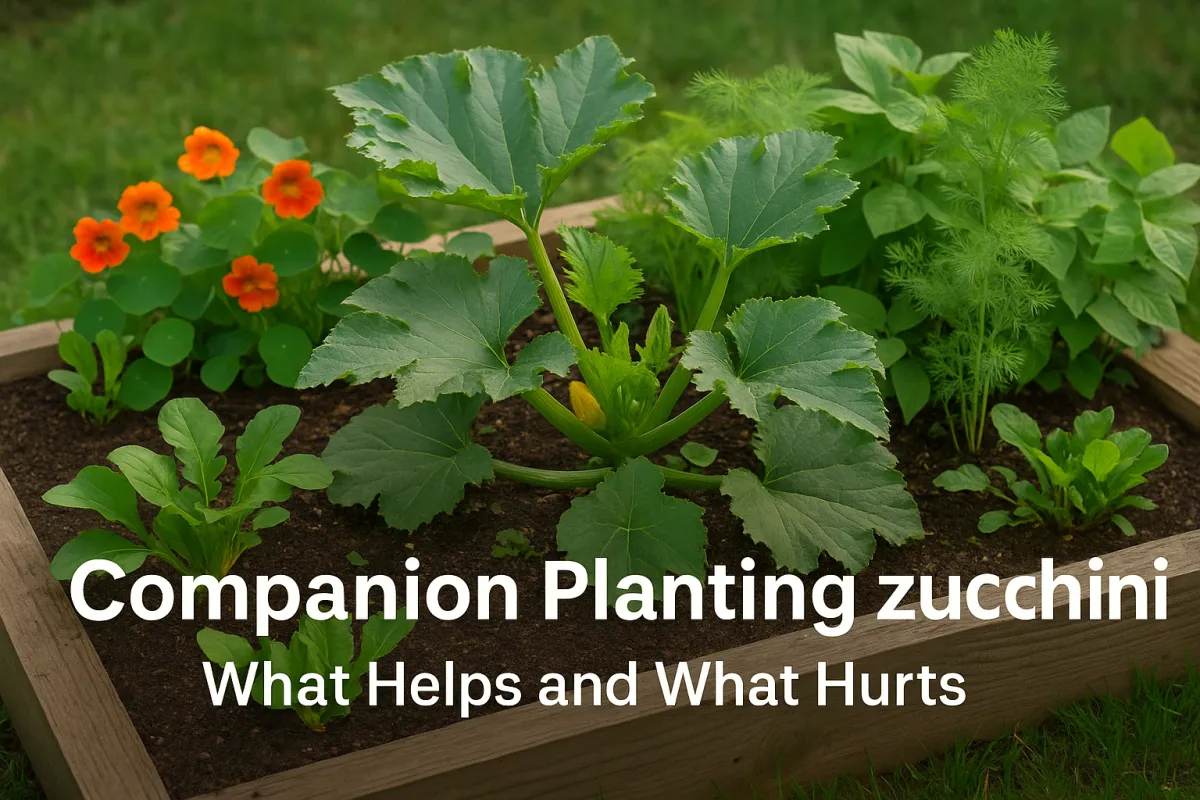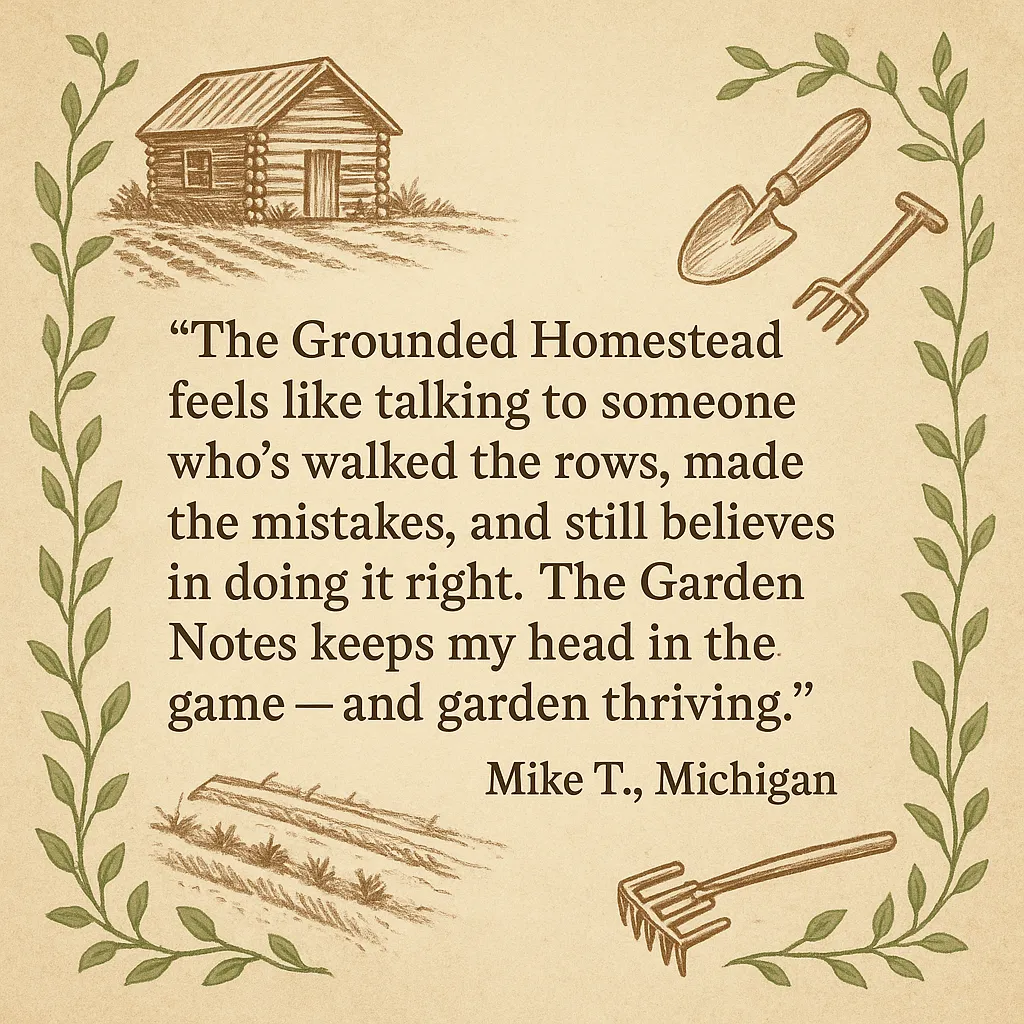
Companion Planting with Zucchini: What Helps and What Hurts
Companion Planting with Zucchini: What Helps and What Hurts
I’ll never forget the year I thought I’d nailed the zucchini game. Big leaves, tall plants, no signs of disease—looked like a textbook win. But week after week, I kept checking those plants… and getting almost nothing back. The vines looked fine, but production was poor. What went wrong?
Turns out, they were missing something important: the right companions. Zucchini is a generous crop, but it doesn’t like to grow alone. Just like us, it does better with the right neighbors.
Let’s dig into how companion planting can take your zucchini from “meh” to overflowing—and how to avoid the combinations that backfire.
Why Companion Planting Works (Especially for Zucchini)
Companion planting is simple: put the right plants near each other, and they help each other out. You get better growth, fewer pests, and more fruit. It’s not magic—it’s just observation over time.
Zucchini especially benefits from this approach because it’s a heavy feeder, prone to pests, and totally reliant on pollination. One missing piece (like nearby flowers to draw in bees) can tank your harvest.
Grandma always said: “Some things just grow better with company. Plants too.” And after enough trial and error, I’m convinced she was right.
The Best Companion Plants for Zucchini (And Why They Work)
Here are four all-star zucchini companions I use every season:
1. Nasturtium
Acts as a trap crop—draws aphids and whiteflies away from your zucchini.
Flowers bring in pollinators, especially early in the season.
Low-growing, non-competitive, and adds color.
2. Dill
Attracts parasitic wasps, ladybugs, and hoverflies—natural enemies of squash bugs.
Its scent helps confuse pests.
Bonus: you can harvest sprigs for cooking without hurting your zucchini crop.
3. Bush Beans
Fix nitrogen in the soil, feeding hungry zucchini roots.
Provide low shade, helping soil retain moisture on hot days.
Compact growth improves airflow between plants.
4. Radishes
Help repel squash vine borers and flea beetles, especially when planted early.
Grow fast—harvest before zucchini spreads wide.
Loosen soil in the root zone.
🪴 Spacing Tip: Place companions about 6–12 inches from your zucchini depending on their spread. Don’t overcrowd—think cooperation, not competition.
What NOT to Plant Near Zucchini
❌ Potatoes
Compete for water and nutrients.
Attract similar pests—especially beetles.
❌ Other Squash (like pumpkins or cucumbers)
Invite cross-pollination confusion.
Attract squash bugs and vine borers in double.
❌ Fennel
Allelopathic: its roots release compounds that inhibit the growth of nearby plants, including zucchini.
Real talk: I once crammed a raised bed with three types of squash. Thought I was saving space. Instead, I created a pest buffet. Lesson learned.
How Flowers and Herbs Boost Your Harvest
Pollinators are non-negotiable for zucchini. No bees = no fruit. That’s why flowers like nasturtium, calendula, and marigolds make such a difference.
Likewise, herbs like dill, basil, oregano, and thyme release strong scents that confuse pests and attract beneficials.
If your zucchini looks healthy but isn’t producing, it might not be a soil or sun issue—it might be a lack of buzz.
Raised Bed Layout Ideas for Zucchini and Friends
Here are two setups I use regularly:
🟩 4x4 Raised Bed
Center: 1–2 zucchini plants
Corners: Nasturtium
Back edge: Dill
Front edge: Radishes (early season)
🟩 2x8 or 3x6 Rectangular Bed
Zucchini staggered in rows (offset for airflow)
Bush beans alternating between hills
Nasturtium flanking the ends
Dill at the northern/back side
Keep beds tidy, airflow open, and water deep at the base. Let the companions fill in the rest.
Think of it like planning a community—not a crowd. Everyone needs room, but they’re better together.
Zone-by-Zone: When to Plant Companions
Your USDA zone affects planting order. Here’s a quick cheat sheet:
ZoneEarly (Pre-Zucchini)With ZucchiniPost-Zucchini3–5Radishes, dill startsBeans, nasturtiumsKale, spinach6–8Direct sow radishes, dillBeans, nasturtiumsLettuce, beets9–10Dill from transplantsAvoid radishes in heatHerbs, arugula
Want the full breakdown? Grab the printable companion chart below.
Succession Planting: Keep the Bed Going
Zucchini takes over fast, but it doesn't need to dominate all season. Here's a smart rotation:
Spring: Radishes go in early. Pull before zucchini spreads.
Mid-Summer: Zucchini + companions in full swing.
Late Summer/Fall: As zucchini slows, replant beans or greens for a second harvest.
Companion planting isn’t just about neighbors—it’s about timing, too.
Caring for Your Companions
Dill: Harvest sprigs early for flavor; let one plant flower for beneficials. It bolts in heat, so succession sow.
Nasturtium: Let sprawl, or train up a trellis for space-saving. Trim if crowding occurs.
Radishes: Pull promptly when mature—don’t let them crowd or go woody.
Beans: Watch for signs of overwatering in tight beds; harvest regularly to encourage production.
Treat them like teammates. Each one contributes something unique.
Harvest Harmony: When Picking One Helps the Others
Pulling radishes makes room for zucchini. Harvesting dill keeps it bushy. Picking beans keeps them producing. It’s all connected.
Plan your harvests to keep the rhythm going, not just yanking plants at random.
Closing: The Year Everything Grew Better
Once I stopped planting zucchini like it was the star of a solo show—and started treating it like a team player—everything changed.
The garden was fuller, the bugs weren’t as bad, and I had more zucchini than I could eat. (Grandma’s zucchini bread recipe got a workout.)
Let your zucchini thrive this year—with friends. Start with one layout, try one new flower, and watch what happens.
And remember: the way creation works in harmony isn’t just beautiful—it’s practical. You’ll see it in your raised bed.
FAQ
Can I plant zucchini next to cucumbers?
You can, but it’s not ideal. They compete for space and share pests.
Do companion plants really reduce pests?
Yes—but not all pests disappear. Think of it like putting up better defenses, not an invisible shield.
What if I only have one raised bed?
No problem. Prioritize airflow, avoid overcrowding, and choose 1–2 companions that solve your biggest issues (like dill for bugs or nasturtium for pollination).
Is it too late to add companions mid-season?
Not at all. You can tuck in nasturtium, dill, or beans even after zucchini is established—just be gentle near the roots.


Facebook
Instagram
X
Youtube